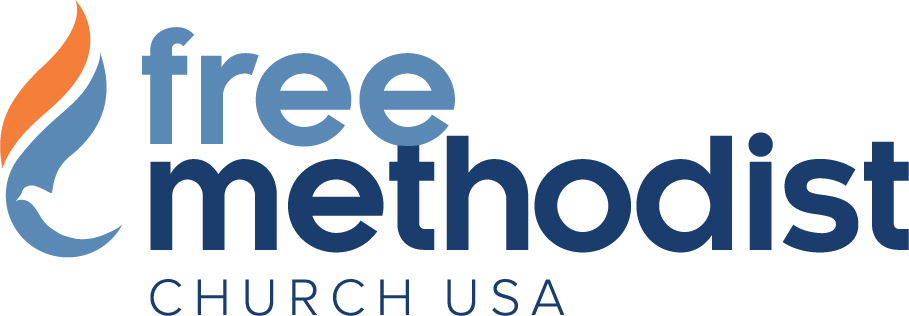WELCOMING THE STRANGER: Faith Communities and Immigration by Alexia Salvatierra
In a recent article, Alexia Salvatierra, who is an adjunct professor at Fuller Seminary and an immigration activist, wrote a thorough history of the Biblical and American experience with immigration, the sanctuary movement, and current realities. It is a great resource, but also a call to participate in the care of those who are being harmed. Comparing the modern sanctuary movement with the “Cities of Refuge” and the “Underground Railroad” the call focuses on the center of Free Methodist biblical commitment and our own history of abolitionist action.
In part she writes:
“In the thirty-fifth chapter of the Book of Numbers in the Hebrew Bible, the writer lays out a remedy for a social and legal problem. In ancient Israel, the penalty for murder was death, “a life for a life.” Family members of the slain person normally carry out the sentence. However, the writers of Numbers recognized that it would not be fair for accidental killers to receive the same punishment as those who kill intentionally. Raging family members could not be expected to stop midstream and investigate; the community is instructed to create cities of refuge where the accused can be kept safe until they can receive a fair hearing. The cities of refuge are the solution for people who committed a crime and received an unfair penalty.
This ancient remedy is the root of the sanctuary church tradition. Since the fourth century in England, churches have offered protection and shelter to those accused of a crime but who would be likely to be punished unfairly if left unprotected. Christians and churches along the Underground Railroad followed this example, as did Christians in Nazi Germany who protected Jews and churches in the 1960s who protected draft-dodgers avoiding service in Vietnam. The most prominent movement using the term “sanctuary” in the twentieth century was the Central American sanctuary movement of the 1980s and 1990s….
Since the election of President Donald Trump, somewhere between 800 and 1,000 congregations have declared sanctuary across the country—double the size of any sanctuary movement to date. New coalitions continue to spring up weekly. However, the vast majority of these congregations do not have families taking shelter inside them. Any standard for prioritization of enforcement is gone; the new administration’s Border Security and Immigration Enforcement Improvement Executive Order treats immigration offenses as crimes equal in importance to other serious criminal offenses. Living inside a church is, in effect, an indeterminate sentence of house arrest and a potential financial disaster for a family. Publicly living inside a church can invite bullying for the children and death threats for the adults. While a few immigrant families make this choice, the more common form of sanctuary is private. Individuals or families move into a church building or a private home to escape an address that ICE knows, ideally in a community where they can start over again and hide in the shadows. Their stay in sanctuary is temporary; as soon as possible they move into their own lodging and a new life in greater obscurity. These private cases, however, do not serve to change hearts and minds of legislative officials or those in the wider U.S. culture, nor do they offer any real solution to the broader problem. Member coalitions of the interfaith PICO organizing network have been particularly involved in developing private sanctuary options as well as engaging their congregations in other aspects of sanctuary work….
Although a movement had been renewed, or reborn, the failures to pass the Comprehensive Immigration Reform Act of 2007 and the Dream Act (multiple attempts in 2001, 2005, and 2007) could be seen as evidence that the coalition supporting immigrant rights lacked the breadth and depth necessary to create the political will for reform. There are too few American citizens who feel that the lack of humane immigration law affects them personally. At this point, evangelical leaders in various places in the country, including Willow Creek leadership in Chicago and several megachurch leaders in Orange County began to ask, “What role might the church play today in broadening and deepening this coalition because of our mandate to care passionately about people who are not ‘us’?” This group reasoned that if the church does not care passionately about the well being of all people, including immigrants, then the church is not faithful to Jesus. We realized that the evangelical churches were uniquely positioned to make a difference in the stalemate. Evangelical churches are passionate in their discipleship; and evangelicals are known for being willing to make great sacrifices for obedience to God and for mission. The international Hispanic community is one of the fastest growing evangelical constituencies in the world. The 2014 study by the Pew Research Center “Religion in Latin America” states that the Central American countries of Guatemala, El Salvador, and Honduras are is now estimated to be over 50 percent evangelical. In the U.S., immigrants from Latin America and Asia are the fastest growing population within evangelical churches. Evangelical churches are also often associated with the Republican Party because of their stance on abortion. As a result, they are uniquely equipped to work on organizing conservatives to work with liberals to pass immigration reform.
To read the entire article click here.
